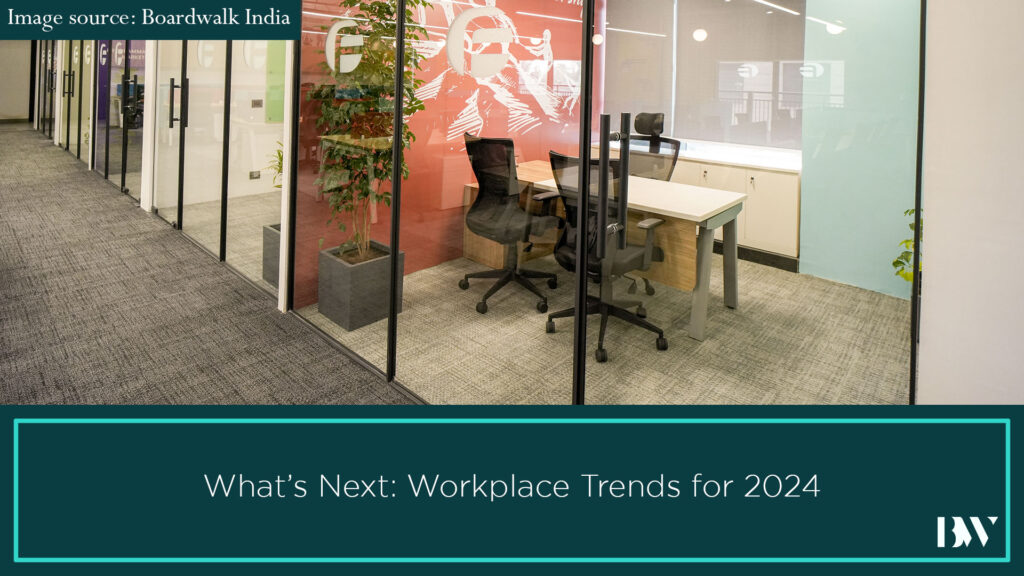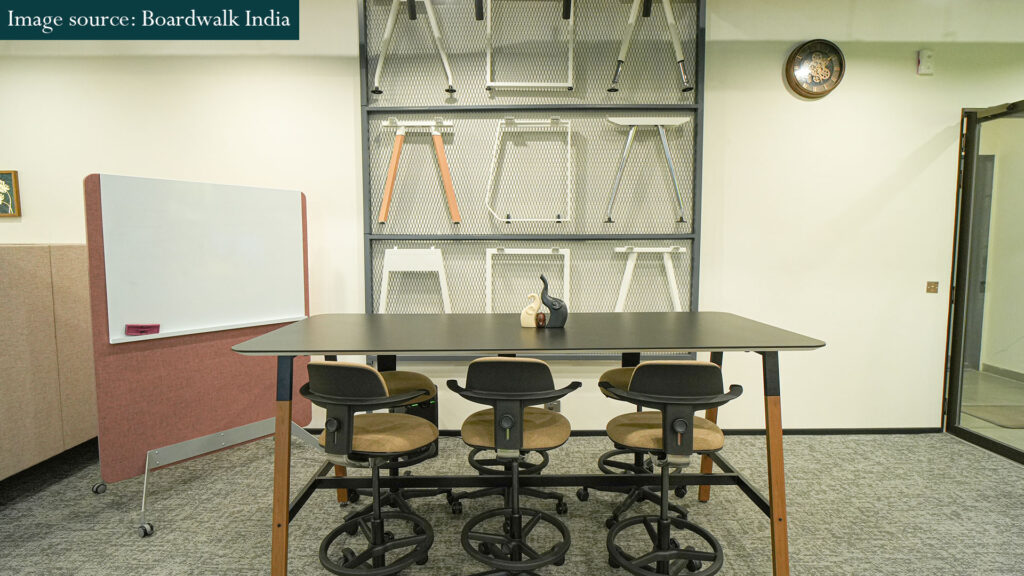What’s Next: Workplace Trends for 2024

The aftermath of the worldwide issues of 2020 continues to shape the professional environment. To name a few, there has been a move toward remote work, a focus on employee well-being, and an acceleration of digital change. To be robust and competitive in the face of these developments, businesses everywhere are rethinking their approaches. Examining the top 15 workplace trends for 2024, this article provides organisations with guidance on navigating the nature of work in the future.
Table of Contents:
1. The Hybrid Work Model
2. Prioritising Employee Health and Safety
3. Embracing Diversity and Inclusion
4. The Upskilling Imperative
5. Accelerating Digital Transformation
6. Centralising Communication
7. Fostering Work-Life Balance
8. Investing in Employee Well-being
9. Advancing Gender Equality
10. Valuing Soft Skills
11. Prioritise Mental Health
12. Focus on Retention, Upskilling, and Talent Development
13. Build Trust in your Employees
14. Focus on Leadership Development Strategies
15. Focus on DEIB Initiatives

1. The Hybrid Work Model
The hybrid work style is quickly replacing the traditional workplace trends as the new standard. This strategy gives employees freedom and allows organisations to keep an office presence by combining remote work and office attendance. This paradigm is made possible in large part by technology, which guarantees smooth productivity and collaboration wherever it is.
2. Prioritising Employee Health and Safety
Following the pandemic, employee health and safety have become paramount. Employers are taking extensive steps to guarantee secure workplace trends, such as following health regulations and utilising technology to facilitate contactless communication. Creating a culture of trust among employees requires open and honest communication regarding safety procedures.
3. Embracing Diversity and Inclusion
More than ever, there is a call for diversity and inclusion. Businesses are realising the benefits of having a diverse workforce and are acting to guarantee that everyone has equal opportunity. This entails developing diversity departments, instituting inclusive policies, and making a concerted effort to eradicate workplace trends inequity. A varied crew fosters creativity and productivity in addition to enhancing company culture.
4. The Upskilling Imperative
The talents needed to succeed change with the business environment. To keep ahead of the curve, organisations and employees alike are putting a lot of emphasis on reskilling and upskilling. This trend emphasises the value of ongoing learning and development since it is driven by changes in the nature of work and technological improvements.
5. Accelerating Digital Transformation
Digital transformation is now required rather than a choice, that’s new in the list of workplace trends. Businesses are using digital tools and procedures more quickly in order to boost productivity, enhance customer satisfaction, and encourage innovation. This calls for investments in technology as well as a culture transformation toward change acceptance.
6. Centralising Communication
The increasing number of communication tools available has made a centralised platform necessary. Workflows may be streamlined, information overload can be decreased, and collaboration can be enhanced with a unified communication system. This is especially crucial in hybrid workplace trends, where efficient communication is essential.
7. Fostering Work-Life Balance
Work-life balance requires more attention because the boundaries between work and personal life are becoming more hazy. Companies are looking for ways to help staff members achieve a healthy balance because they understand how important it is to productivity and well-being. Among the tactics being used are promoting time off, providing mental health assistance, and offering flexible working hours.
8. Investing in Employee Well-being
Beyond just physical health, employee well-being also includes mental and emotional health. Businesses are spending money on all-inclusive well-being initiatives that provide assistance with stress reduction, mental health, and general wellness. Talent attraction and retention are becoming increasingly dependent on this all-encompassing approach to employee health.
9. Advancing Gender Equality
Gender equality continues to be a crucial concern, and the epidemic has made things more difficult for working-age women. Employers are proactively supporting female workers by offering flexible work schedules, child care assistance, and leadership development programs.
10. Valuing Soft Skills
Soft skills like empathy, problem-solving, and communication are becoming more and more crucial in an increasingly automated society. Businesses are realising how important these workplace trends and abilities are for developing cohesive teams, improving customer service, and exercising effective leadership.
11. Prioritise Mental Health
A startling fact is revealed by the National Mental Health Survey of India: 1 in 7 people suffer from mental health illnesses, yet just 1 in 10 get proper care. Adding to this, since the pandemic began, staff burnout has increased, which is a big problem for India now. Burnout, which is defined as physical, mental, and emotional weariness brought on by ongoing stress and job expectations, is a major issue in the business world.
Remarkably, mental health care is included in the health insurance plans of 58% of the Best Workplaces and workplace trends too. Companies must translate employee input into practical solutions in order to address the structural reasons of burnout and promote a culture of mental health and well-being in the workplace.
12. Focus on Retention, Upskilling, and Talent Development
In the present dynamic and demanding business environment, organisations would be well to strategically prioritise programs related to people development, upskilling, and retention. Given the severe effects of employee burnout, which have been made worse by the current epidemic, cultivating a work environment that places a high priority on retention is essential to the resiliency of an organisation. Since sustained performance and employee satisfaction are correlated, companies should actively invest in methods to retain valuable personnel.
In addition to enhancing staff competency, an aggressive approach to personnel development and upskilling presents the workplace trends as an appealing and progressive employer. By concentrating on these elements, companies may effectively handle current issues and get ready for future ones by developing a staff that is resilient, skilled, and engaged and that can confidently handle changing industry needs.
13. Build Trust in your Employees
Developing an open communication culture among employees and placing a high value on openness and honesty are the first steps towards establishing trust in a firm. Leaders are essential in creating this culture because they lead by example with their choices and behaviours. Building a culture of mutual respect and shared ideals among employees requires teamwork, and leaders play a critical role as architects in this process.
In the coming ten years, as technology continues to advance and change lives, trust will become increasingly important. Bush emphasises the value of a consistent commitment, saying that customers will judge a firm’s credibility based on how its personnel behave. He claims that when a company uses artificial intelligence, people will be more inclined to trust it.
14. Focus on Leadership Development Strategies
The contemporary landscape of leadership demands a renewed emphasis on creative approaches to developing leaders. A more nuanced approach is replacing the traditional concept of leaders as inspirational visionaries in the workplace. Employees today look for leaders who can not only lay out a clear vision for them, but also act as capable mentors and coaches who enable them to take ownership of their own leadership development.
15. Focus on DEIB Initiatives
In the current corporate context, where sustainability concerns and technological breakthroughs are redefining the field, DEIB is emerging as a critical change agent. The implementation of Diversity, Equity, Inclusion, and Belonging (DEIB) practises in your company is critical and has a 4.3x boost in workplace well-being.
Conclusion
It’s evident that the workplace trends are changing as we move toward 2024 in response to issues and trends throughout the world. A proactive approach is needed to embrace these changes, with an emphasis on employee well-being, technology, and flexibility. At the vanguard of this change is Boardwalk India, which provides insight gathering. Navigating the workplace trends of the future has never been simpler thanks to the availability of both qualitative and quantitative data.
For more information on workplace trends for 2024, visit us at www.boardwalkindia.com
